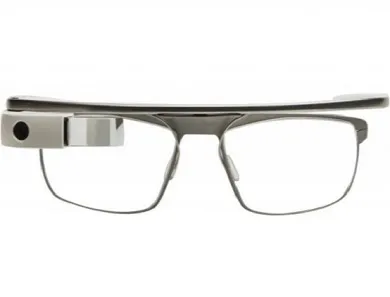Google Glass was supposed to become everyone’s next portable computer. However, the device didn’t quite catch on. But now, a version of the product has been tested and deployed across many factories in the United States by companies such as Boeing, GE and DHL. This edition is known as Google Glass Enterprise Edition (EE).
Google Glass Enterprise Edition is a wearable technology device developed by Google, specifically designed for business and industrial use. It is a hands-free, head-mounted display that allows users to access information, take photos or videos, make calls, and perform other tasks using voice commands and gestures. The device features an augmented reality display and can be customized with software applications to meet the needs of different industries such as healthcare, manufacturing, and logistics. The Enterprise Edition is an upgraded version of the original Google Glass, with improved hardware and software, longer battery life, and enhanced security features.

There have been quite some upgrades to the Enterprise Edition. It has a better camera, extended battery life, faster Wi-Fi and processor and a new red light that turns on when recording video. The electronics of the Glass have also been made modular in the shape of a Glass Pod, which can be detached and reattached to Glass-compatible frames. These include things like safety goggles and prescription glasses.
Right now, the scale of the Google Glass Enterprise Edition rollout is quite small, though. Wired reports that sales have been in the hundreds, and most of the biggest customers buying the product are only doing so on a trial basis. However, Google’s parent company Alphabet remains optimistic about the project. In fact, feedback from workers and companies have been positive, with the device providing assistive information on the work floor and improving productivity.
However, the approach and direction with the Google Glass Enterprise Edition are more cautious. The chief of Alphabet’s experimental X division, Astro Teller, says:
“We’re not going to prejudge exactly what that path is. We’ll focus on the places that are actually getting value out of that and go through the journey with them, being open minded about where it’s going to go.”
Recently, Alphabet lifted its non-disclosure agreement on its Glass EE partners. Now, the company is opening up the program for other businesses to participate. It certainly appears that Google’s failure in making the original Google Glass a mass market product might bring about success for Alphabet’s workplace-focused assistive device.
Benefits of Google Glass Enterprise Edition
Google Glass Enterprise Edition offers several benefits for businesses and industries, including:
- Hands-free operation: The device is worn on the head, allowing users to operate it without using their hands. This can be especially useful in industries where workers need to use both hands for tasks such as manufacturing or healthcare.
- Augmented reality display: The device features a heads-up display that overlays digital information onto the user’s view of the real world. This can be used to display instructions, checklists, or other information that can improve productivity and accuracy.
- Voice commands: Google Glass Enterprise Edition can be controlled using voice commands, making it easy to access information or perform tasks without the need to use a keyboard or touch screen.
- Customizable software: The device can be customized with software applications to meet the needs of different industries. For example, healthcare providers can use the device to access patient records or monitor vital signs.
- Improved safety: Google Glass Enterprise Edition can help improve safety in industries such as manufacturing or logistics by providing workers with real-time information or alerts about potential hazards.
- Enhanced productivity: By providing workers with instant access to information or tools, the device can help improve productivity and efficiency in various industries.